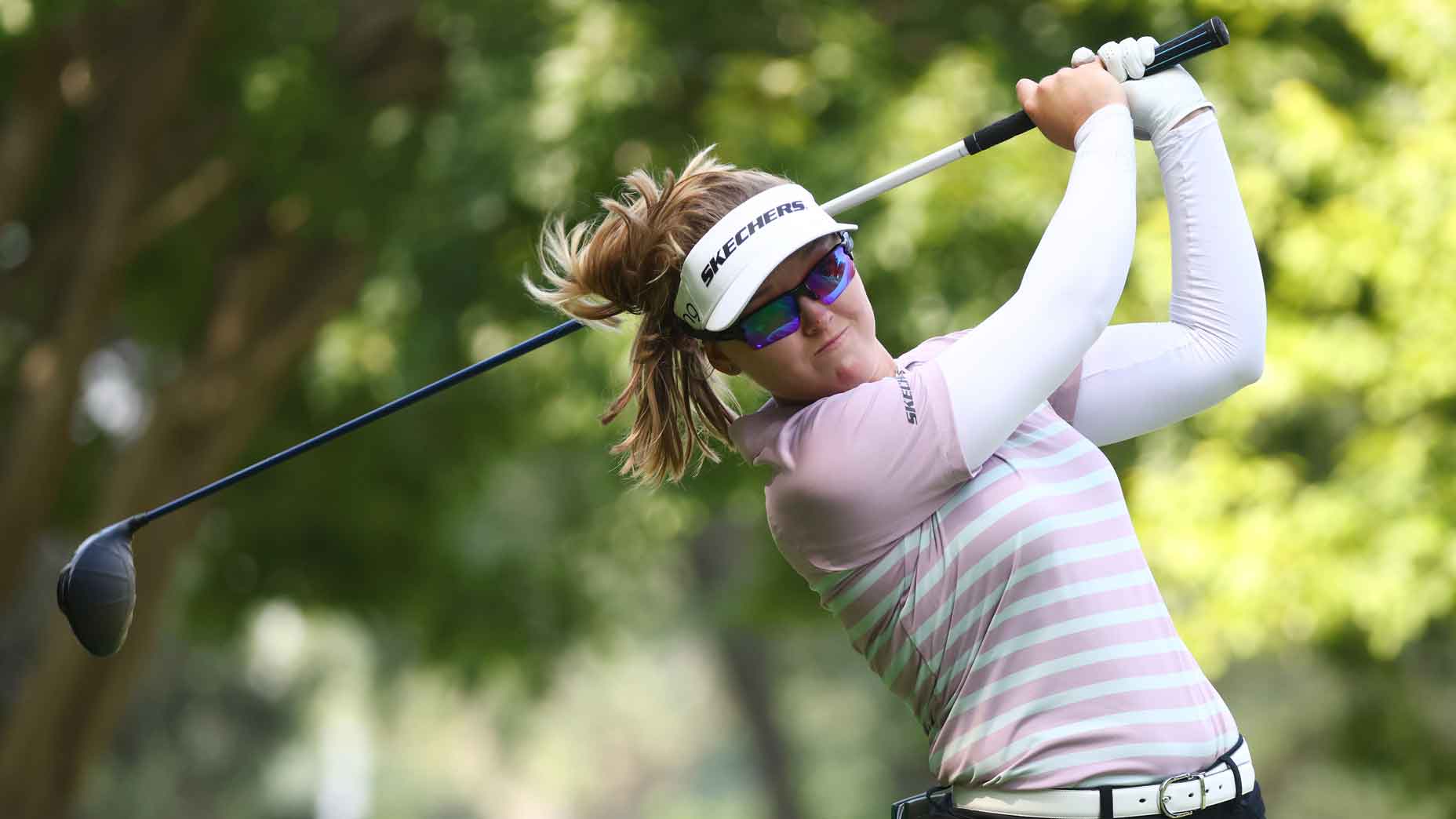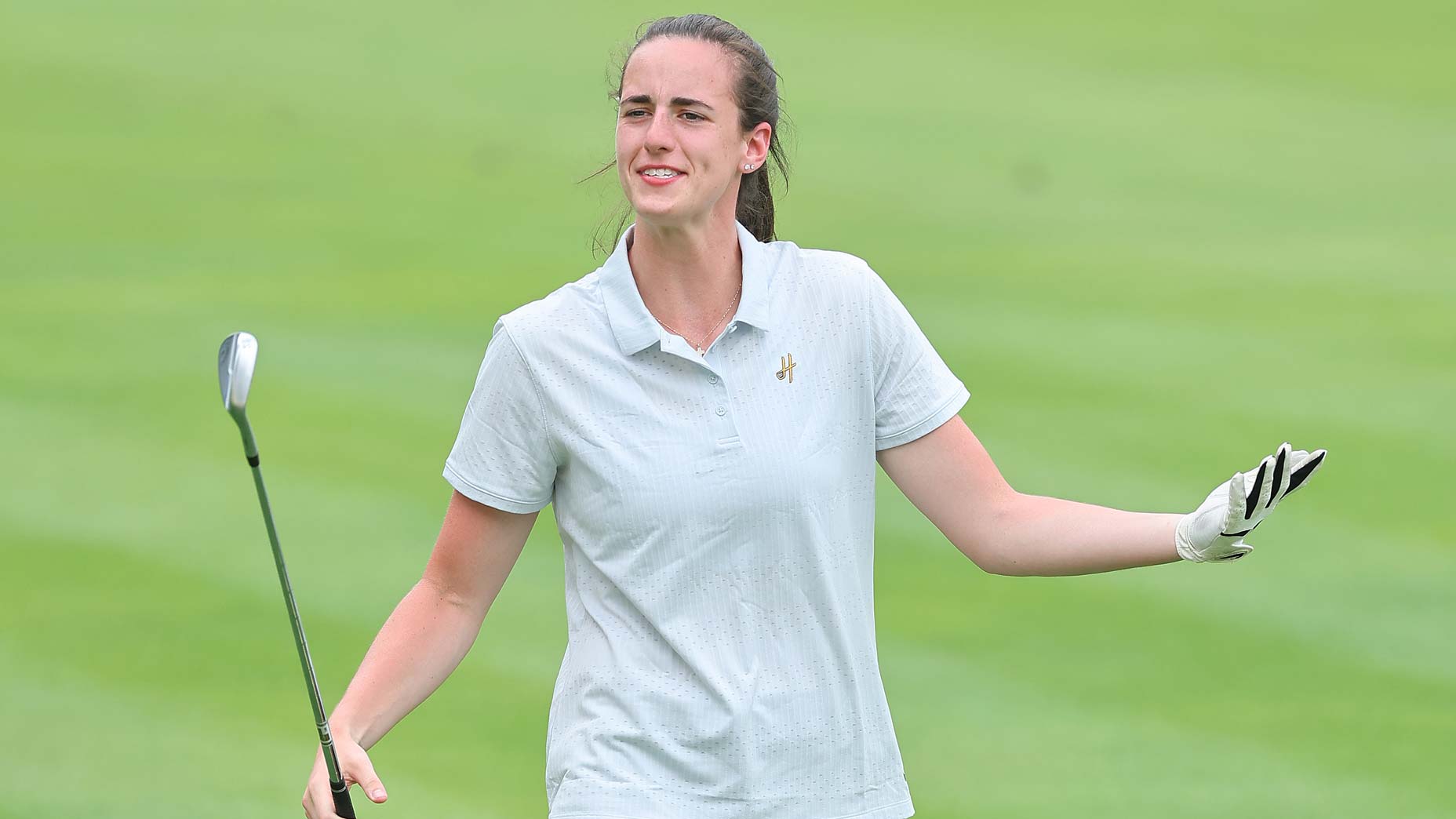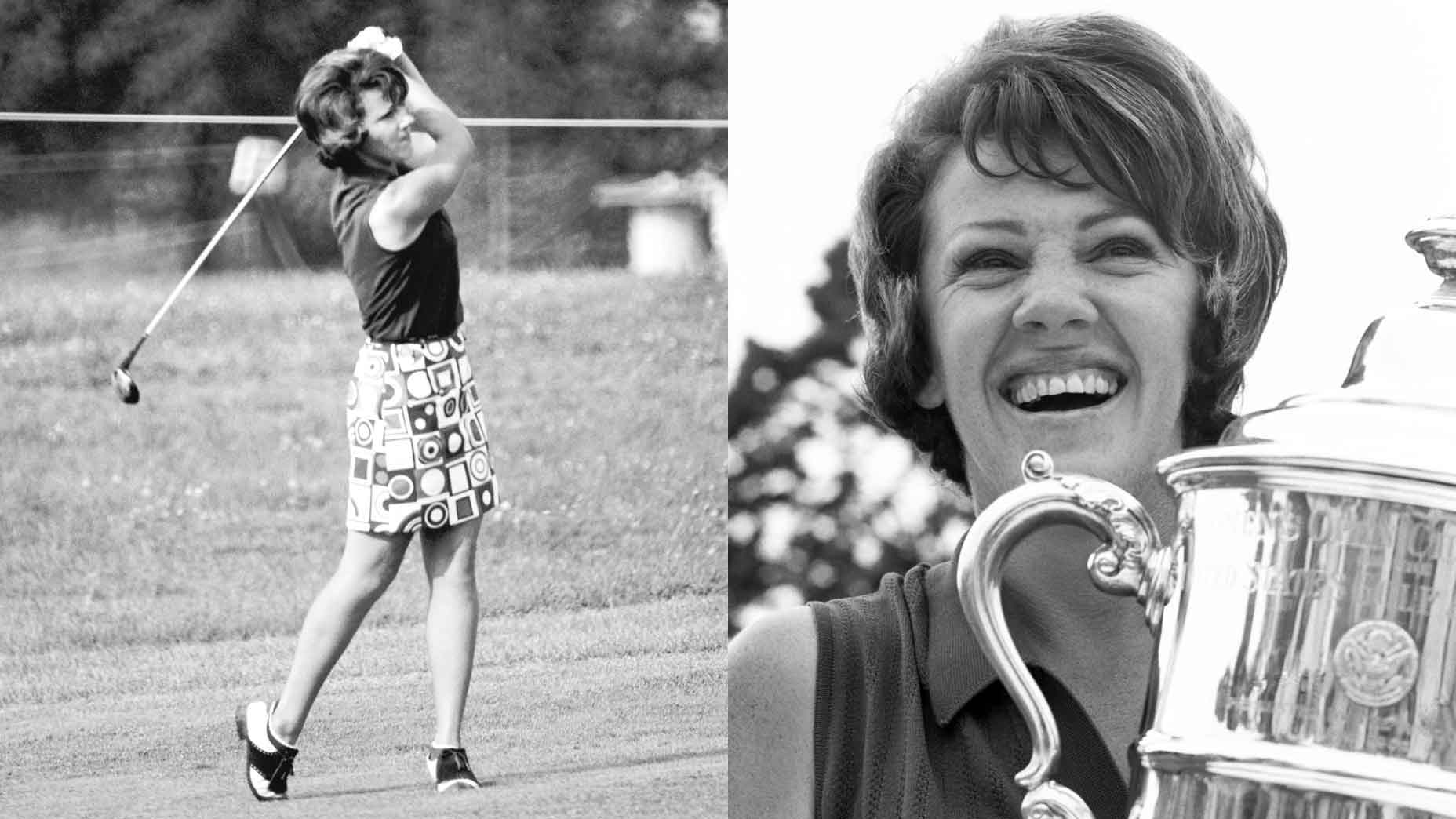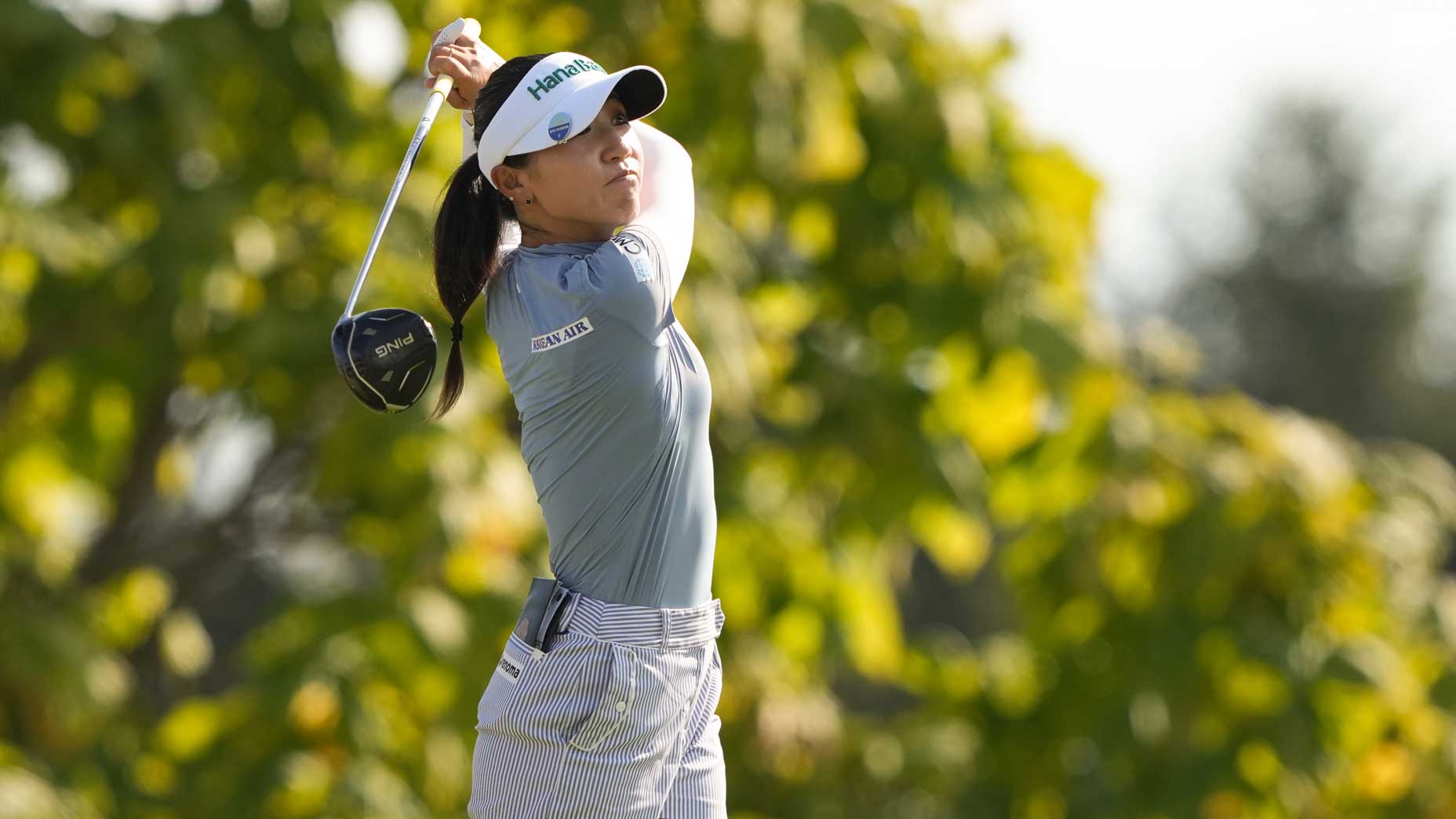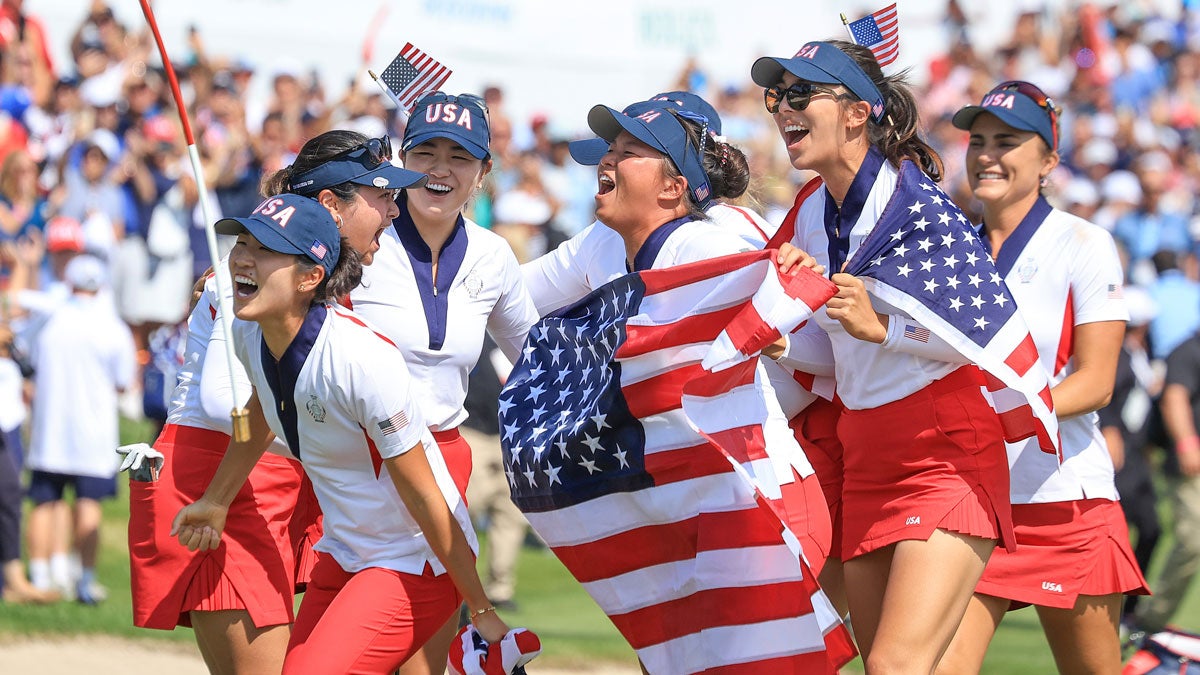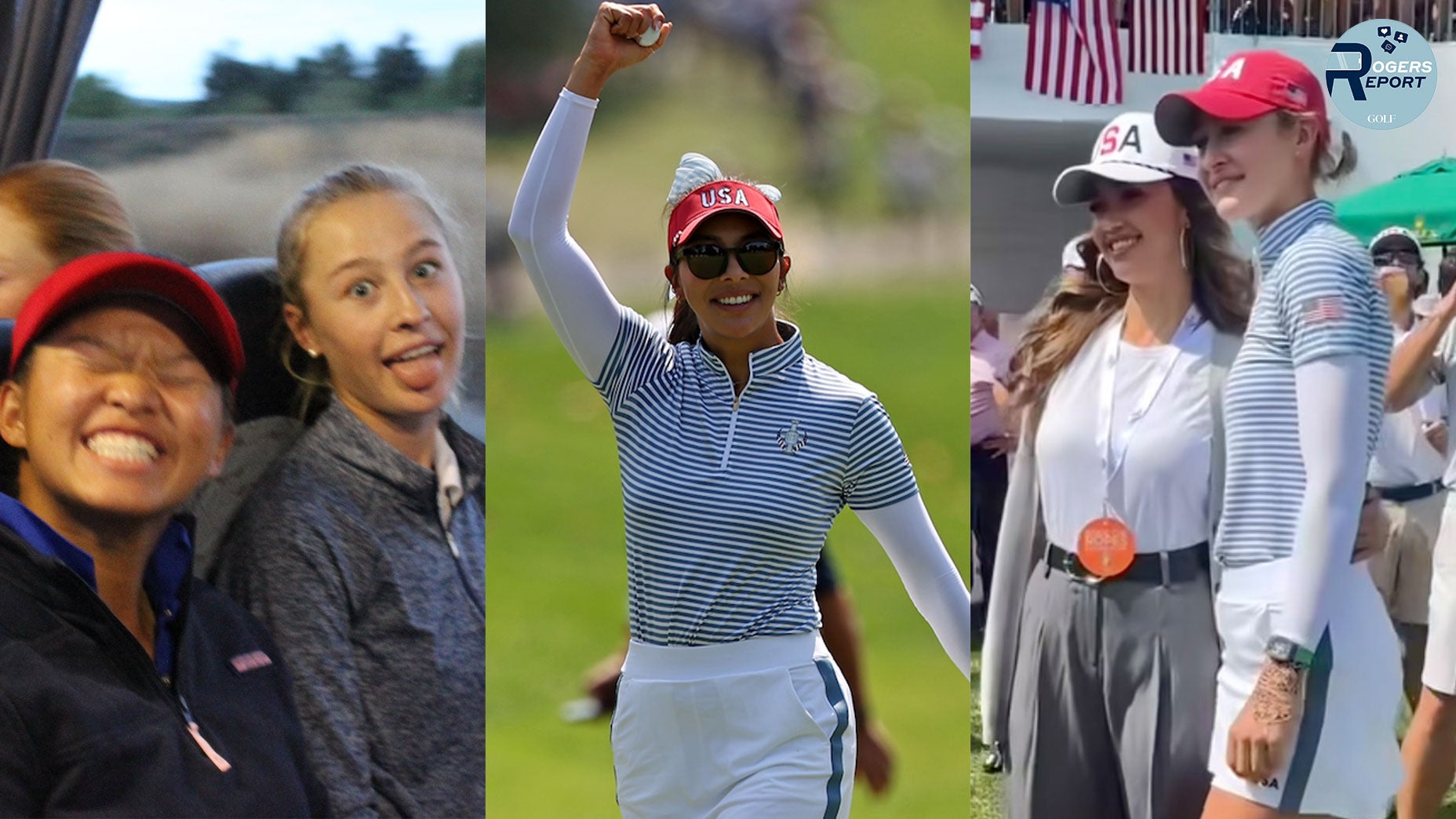Why this LPGA broadcast was a TV production unlike any other
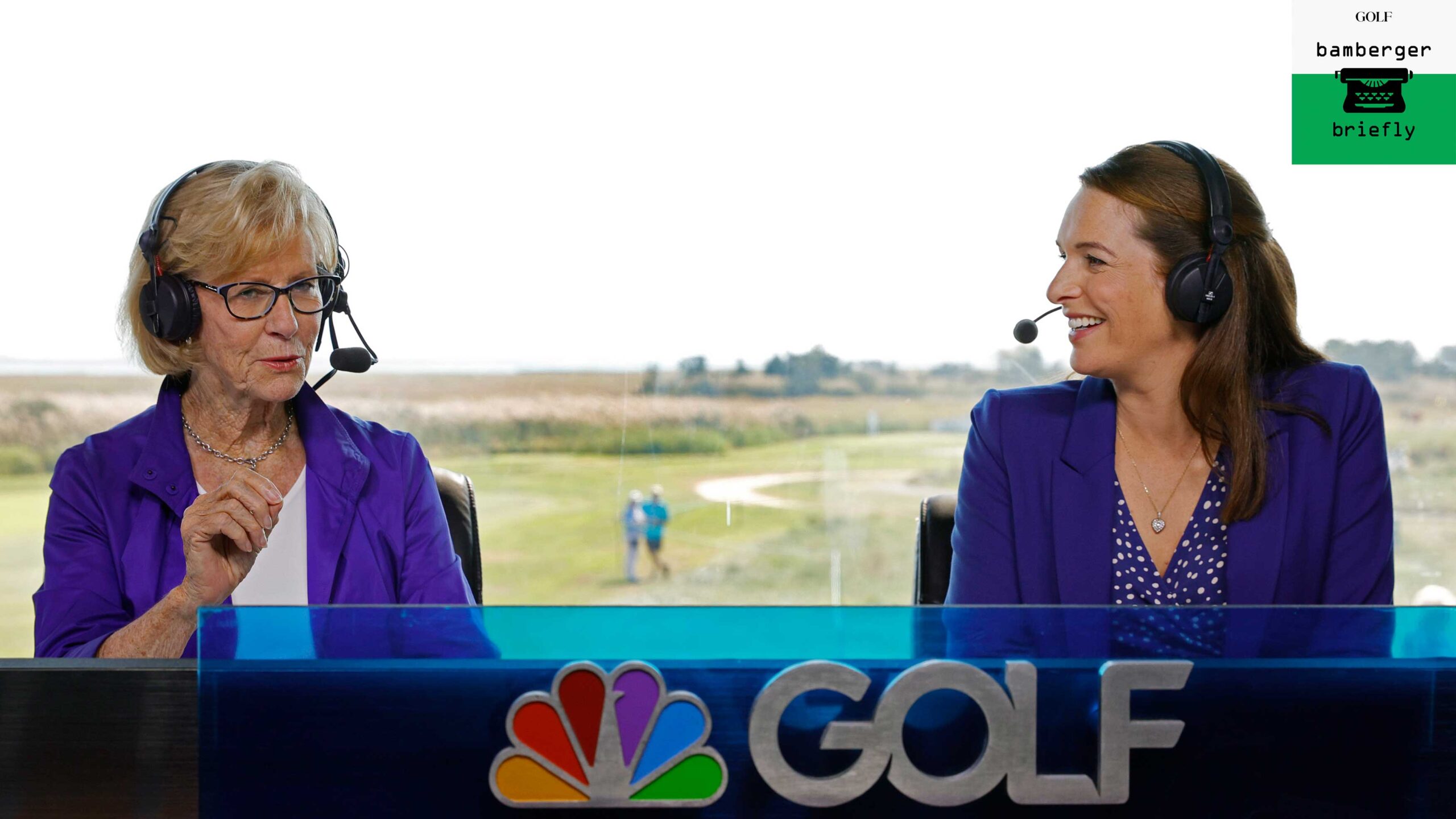
Judy Rankin, left, and Cara Banks in the booth at the ShopRite LPGA Classic.
getty images
GALLOWAY, N.J. — The LPGA landed here, as it does every year, on a gentle, timeless course beside the Seaview resort, across a gleaming bay from Atlantic City. The sunlight was dazzling. Maybe you were watching, on Golf Channel. The ShopRite LPGA Classic, on from 1 p.m. to 4 p.m., and then the PGA Tour came on. You know, the Sanderson Farms Championship.
Judy Rankin was the show’s lead analyst. An icon of the game, as a player and a broadcaster. A mentor to dozens of players over the years, and to a sizable number of TV people, too.
Rankin watched the veteran Dottie Ardina hole a wedge shot for an eagle on the last hole to make the cut on the number and said, “Happy to see a good thing happen to a player who really needs it.” You could hear a half-century of golfer empathy in that one comment. Our Judy. To be on TV every week or so, and in our dens, is to become a part of our lives.
Beside Rankin was Cara Banks, the show’s anchor, her posh southwest London accent coming to you straight out of Jersey. Parkway Exit 41, if know your Garden State byways. “The On Her Turf Shot of the Day,” Banks told us, setting up the tape of Ardina’s eagle. “And you can’t get much better than this.” Indeed, you cannot.
Why does golf sound better through the mouths of the British?
Rankin and Banks were both sitting on swiveling black chairs in what you might call a TV tower, though it was only about 6 feet off the ground. A trailer, really, dark and cool, situated behind the 16th tee. Late in the Saturday broadcast, a shade was lifted behind them and through a window you could see the course, Absecon Bay behind it and, across the bay, the glass walls of the Atlantic City gambling palaces.
On the course, the players were plying their trade through the wind, bouncing balls onto the green like it was 1921. If you were there, you could see lots — and miss more. Has there been a better invention than golf on TV?
To Banks’ left and out of the glare of the TV lights was Katie Szklinski, a production assistant, handing large index cards to Banks, one at a time, a series of player and tournament factoids, plus the designated copy for this promo and that one. In a corner of the trailer was Paige Mackenzie, the former LPGA player, watching the golf on different monitors, preparing herself to analyze holes and shots, as needed. It’s like playing the outfield. The ball is coming to you. You just don’t know when. So you have to be ready. As needed, as needed.
Nearby, on a table, were bags of Doritos and Cheetos and a lint brush and tub of Germ-X hand sanitizer. Nobody said it would be easy, broadcasting live TV during a pandemic.
On the course, wearing headsets and microphones, were two so-called fairway foot soldiers: Karen Stupples of England and Florida and the winner of the 2004 British Open, and Kay Cockerill, a two-time winner of the U.S. Women’s Amateur. They were following Lexi Thompson, Inbee Park, Brooke Henderson, among your other popular favorites.
A good tournament, with a bunched leaderboard. The ShopRite tournament is everything a professional golf event should be —mellow, communal and charming, but also athletic and, in its way, exciting. There were pieces of fruit on top of the tee markers.
As needed is not a term of live TV production, but it could be.
The show was run by the veteran producer Beth Hutter, sitting in a broadcast truck plunked down in a barren field about 500 yards away from the TV-ready Rankin and Mackenzie and Banks. Various deputies were beside Hutter, everybody looking at a wall of screens, 15 in all, with more screens in other places. This was Hutter’s show, ultimately. We saw what she wanted us to see. The digital clocks in the broadcast truck gave you the time to the second, but the countdown to live is human, same as it ever was.
“Five, four, three, two and — one.”
Showtime.
Live TV is fast and stressful. It has produced many screaming and profane producers and directors through the years. Hutter is not among them, not at all. Go here, go there; go here, go there. As needed. Her boss, Molly Solomon, Golf Channel’s executive producer, is not a screamer, either.
“Give me an aerial pass,” Hutter said.
This is not a business with time for please and thank you, not when you’re live. Maybe at the end of the show. Later, Banks said to Greg Thorne, the show’s affable stage manager, “Greg, I better get my jacket on.” He helped Banks into her purple blazer, right arm, left arm, not a word spoken.
In the broadcasting truck, there was a passing joke about “lozengers,” courtesy of Hutter. You know, someone creates a new way to say lozenges and the shelf-life is forever. There was, during a commercial break, a mock-earnest discussion of what fruit was assigned to which tee. Live TV is tense. You do what you can, to keep things light. That’s Hutter’s approach.
Céline Boutier won the tournament. Her parents are from Thailand, she grew up in France, she went to Duke and she speaks perfect English with a French accent. Boutier, a two-time Solheim Cup player, won from the clubhouse. She won, after a final-round 63, while watching the Golf Channel broadcast on a TV in the locker room.
TV plays a huge role in golf and it has for 65 years. At least three other players could have tied Boutier coming in, but they didn’t. Cockerill interviewed the winner at the end of the New Jersey show, promptly by 4, to make way for the Sanderson. The win was Boutier’s second LPGA title, her first in the U.S. What a final round.
It’s easy to forget, when you look at the high rises on the fall sporting landscape — the NFL and college football, baseball getting into the playoffs — how life-changing an event like the ShopRite can be. It’s a huge event, the most important thing in the world, seen through a certain prism. But also not. Just another week in their lives, for the players, the broadcasters, the caddies, the rules officials. The traveling circus of professional golf.
A day before the tournament began, Rankin was talking about her Golf Channel family, her road family. “In our group of people,” she said, “you never, ever have to eat dinner alone if you don’t want to.”
On Saturday night, Cockerill tweeted out a snap of a dozen women — and one little girl, with her mom, Hutter — who were putting on the ShopRite tournament. It brought to mind the old CBS gang — Ken Venturi, Pat Summerall, Ben Wright, Frank Chirkinian, Chuck Will — drinking their dinner at various steakhouses in various cities in the 1970s and ’80 and ‘90s.
Nobody noted then that the broadcast team was all-male, and someday, maybe, it won’t be noteworthy when the on-air talent for a golf tournament is all female, but for now it is. It happened for the first time at the ShopRite. There were lots of men working the show, but the five live mics all belonged to women. History, of a kind.
Thorne, the stage manager, was making his way through the set on Saturday afternoon, tending to the needs of the talent, when Rankin said, “Greg is a man amongst girls — and he likes it.”
Everybody laughed. You don’t need a sense of humor, to work in live TV. But it helps.
Before long, the show was over, dinner was planned, blazers came off, a PA offered Banks a ride to the clubhouse. “No, thanks,” she said. “I’ll walk.” Rankin looked at the fading sun through her signature sunglasses and said, “I’ll walk, too.”
Off they went.
Michael Bamberger may be reached at Michael.Bamberger@Golf.com

